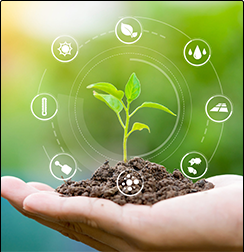Bacillus Methylotrophicus and Trichoderma Longibrachiatum: The Mighty Microbes Unveiled- Unleashing its Potential in Agriculture and Beyond
Bacillus methylotrophicus and Trichoderma longibrachiatum are two powerful microbes that have shown great potential in agriculture and beyond. Let us explore their characteristics and the ways they can be harnessed:
Bacillus Methylotrophicus:
Bacillus Methylotrophicus is a species of bacteria that exhibits methylotrophic capabilities, meaning it can use compounds such as methanol as a carbon source. Here are some key aspects of Bacillus methylotrophicus:
Plant Growth Promotion
Bacillus methylotrophicus has been shown to promote plant growth and enhance crop yields. It produces plant growth-promoting substances such as auxins, gibberellins, and cytokinins, which stimulate plant growth and development. It can also improve nutrient uptake by solubilizing phosphates and fixing atmospheric nitrogen.
Disease Suppression
The bacterium has biocontrol properties, enabling it to suppress various plant pathogens. It can produce antimicrobial compounds, lytic enzymes, and volatile organic compounds that inhibit the growth of pathogenic fungi and bacteria. Bacillus methylotrophicus has been effective against pathogens causing diseases like root rot, damping-off, and wilts.
Stress Tolerance
Bacillus methylotrophicus exhibits tolerance to environmental stresses such as drought, salinity, and heavy metals. It can help plants withstand diverse conditions by enhancing their stress tolerance mechanism. This resilience contributes to improved plant survival and productivity under challenging environments.
Bioremediation Potential
Bacillus methylotrophicus has been explored for its ability to degrade pollutants and remediate contaminated environments. It can degrade various organic pollutants, including hydrocarbons and pesticides, making it valuable in environmental cleanup efforts.
Trichoderma Longibrachiatum
Trichoderma Longibrachiatum is a species of fungus that belongs to the Trichoderma genus. It is known for its versatile characteristics and multiple applications in agriculture and beyond. Here are some key aspects of Trichoderma longibrachiatum.
Biocontrol Agent
Trichoderma longibrachiatum is a potential biocontrol agent against various plant pathogens. It competes with pathogens for resources, parasitizes their hyphae, and produces antifungal compounds that inhibit their growth. It shows effectiveness against diseases caused by fungi like Fusarium, Rhizoctonia, and Pythium.
Plant Growth Promotion
Similar to Bacillus methylotrophicus, Trichoderma longibrachiatum promotes plant growth and development. It secretes plant growth regulators like auxins and gibberellins, which stimulate root growth and enhance nutrient uptake. It can also enhance plant resistance to stresses like drought, salinity, and soil-borne diseases.
Mycoparasitism
Trichoderma longibrachiatum is known for its mycoparasitic abilities. It can attack and parasitize other fungi, including plant pathogens, by coiling around their hyphae, penetrating their cell walls, and secreting enzymes to degrade their cell contents. This mycoparasitic activity aids in disease control and can prevent the establishment of pathogenic fungi.




Comments
Post a Comment